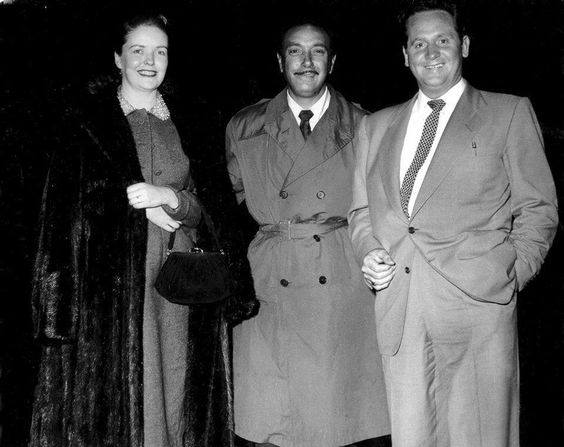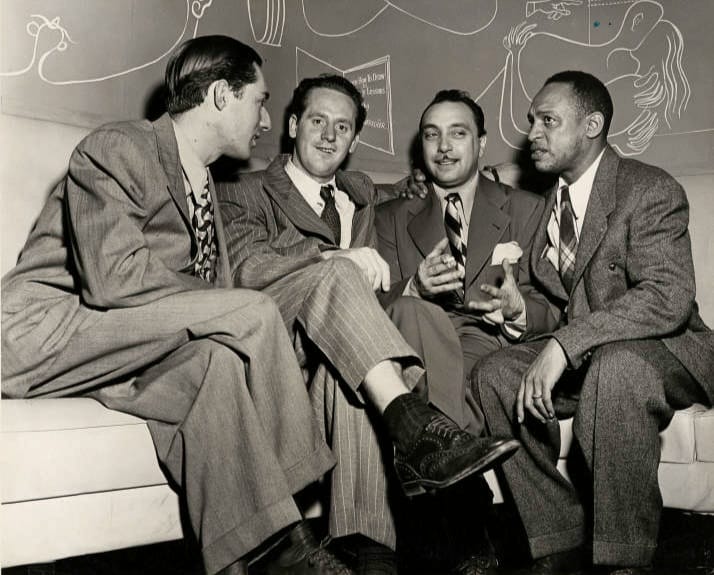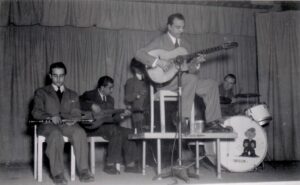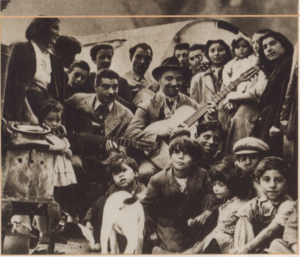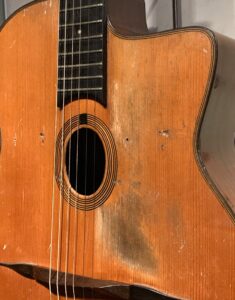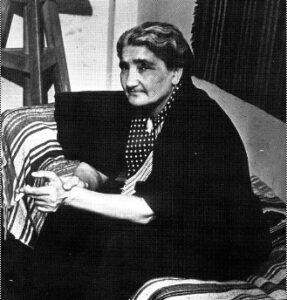Django reinhardt and Les Paul
Les Paul and Django Reinhardt are two of the most influential and innovative guitarists in the history of music. They both revolutionized the way the guitar was played and their impact on the instrument is still felt today. In 1946, these two musical legends had a chance to meet and collaborate at the Paramount Theatre in New York City, leaving a lasting impact on the world of guitar music.
Les Paul was an American guitarist, born in Waukesha, Wisconsin in 1915. He began playing guitar as a child and by the time he was a teenager, he was already performing professionally. In the mid-1940s, he began experimenting with the idea of overdubbing, the process of recording multiple tracks and layering them on top of each other. This technique would later become a standard in the recording industry.
Django Reinhardt was a French guitarist, born in Belgium in 1910 and raised in a Romani community. He began playing guitar as a young child and quickly developed a unique style that blended Romani music with jazz. He became a sensation in Europe in the 1930s, performing with his band, the Quintette du Hot Club de France. Despite losing the use of two fingers in a fire, Reinhardt continued to play with incredible speed and dexterity, pioneering the use of the guitar as a lead instrument in jazz.
In 1946, Les Paul was performing at the Paramount Theatre in New York City when he received an invitation to meet Django Reinhardt, who was also performing in the city at the time. The meeting was arranged by Henri Selmer, a French manufacturer of musical instruments, and the two guitarists hit it off immediately.
Despite the language barrier, Les Paul and Django Reinhardt communicated through their shared love of music and guitar playing. They spent hours discussing their techniques and experimenting with new ideas. Les Paul was impressed with Reinhardt’s skill and innovation, particularly his use of unorthodox chord progressions and his ability to play complex melodies at lightning-fast speeds. Reinhardt, in turn, was fascinated by Les Paul’s use of technology in his recordings, particularly his use of overdubbing to create multiple layers of sound.
The two guitarists even recorded together, with Les Paul playing rhythm guitar while Reinhardt played lead. The resulting recordings, while not widely distributed at the time, are considered to be a landmark moment in the history of guitar music.
The meeting between Les Paul and Django Reinhardt at the Paramount Theatre in 1946 left a lasting impact on the world of music. Their collaboration served as an inspiration to musicians around the world, and their innovative techniques and styles continue to influence guitar playing to this day.
Les Paul and Django Reinhardt also crossed paths in Cleveland, Ohio, during the Duke Ellington tour of 1946. During this tour, Reinhardt was playing an Electric Gibson ES-300 as he did not bring his Selmer guitar from France.
The meeting in Cleveland was also a significant moment for both guitarists, as they had the opportunity to play together once again. Despite the differences in their playing styles and techniques, Les Paul and Django Reinhardt were able to find common ground through their mutual love of the guitar.
How did you meet Django Reinhardt?
“I was at the Paramount Theatre, and the doorman downstairs yelled out: ‘Les, you have a visitor down here, name of Django Reinhardt.’ I thought he was kidding me, so I yelled back, ‘Well, send up Jesus Christ and a case of Beer!’ Then in walked Django, who didn’t speak a word of English. I had a couple of Guitars in the room, so we just started playing together. We played very similar, which makes it easy for one Guitarist to know what the other is doing.
“He was Touring with Duke Ellington and I was with Fred Waring, so our paths often crossed. Django would come over and we’d talk mostly about the people we learned from. He learned from an old Spanish Gypsy fellow who hung around the fire at the encampments where he spent most of his youth, and he developed his down-stroking style.”
Les Paul –
When he got back home to Paris, he began to change his style, because he heard our way of playing over here. He even started playing my Choruses and those of other Guitarists here in the States. I told him he should never copy us, because we were copying him! Django had recorded a copy of my version of “Brazil” and also “How High The Moon.” But he was totally confused with the Electric Guitar; it was a real opponent to him, because he used a very stiff Pick and was a down-Picker.
Then in 1951, I landed in Paris and found Stephane Grappelli playing Piano in a little Bar. Stephane said, “If you find Django I’ll be surprised, because I haven’t seen him in 2 years.” So I gave $40.00, two $20.00 bills, to 2 Cab drivers but I tore them in half. I said, “You get the other half when you find Django.” The next morning, Django called me from South France, and he was there the next day with me. We went to a music store and jammed, and he picked out a Selmer Maccaferri Guitar for me with an Amplifier and a Pick-up. He told me he was very depressed. He’d gone down to the Gypsy Camp to fish & goof off, because the people were not accepting him. The Club Owners would say, “I’ll hire you for 5 dollars tonight, but the 1st time you leave that melody you’re going to be right out in the Street.” So I talked him into playing again.
Were you close?
“I loved him as a person and as a player. We were very good friends, but we actually talked more than we jammed. During the War, he recorded from Europe and I recorded from the States. It’s a shame that we never sat in a Recording Studio together, it really is.”
Who would you say were the greatest musicians that you ever played with?
“I’d say Django & Art Tatum. I lived with Art. He was the King. He had so much Technique. Sometimes I’d see him play and I had to walk out of the Club – he was just too much. I couldn’t digest that much goodness. Django was spectacular. He had this incredible, natural fire and a heart of gold. He had this Technique, but he played with soul too. I believe Django represented the biggest change in our times in terms of Guitar playing.
You advised him not to switch from Acoustic to Electric Guitar, didn’t you?
“The biggest mistake Django made was not coming over to the States with his own Musicians. In fact, he didn’t even bring a Guitar or a Pick, because he thought they would have better things here. When he played with Ellington’s Band, they did not play the right kind of Rhythm for him. He decided to change from Acoustic to Electric when he got back from the States in 1946. I advised him not to do it. He would have been better off staying with his own unique style than trying to compete with Bebop. The truth is, Django didn’t know what he had.
The last time I saw Django alive, we were riding in the backseat of a Taxi, and he tapped me on the shoulder and asked me if I could read Music. I said, no, I didn’t, and he laughed ’till he was crying and said, “Well, I can’t read either. I don’t even know what a C is; I just play them.” I talked to Django at length about his fingers. And they were open wounds. He’d soften them with powder. ‘Till the day he died, those wounds never healed. When he got depressed he’d ask me, “Am I good?” I said, “I think you’re the Greatest.” “Well, why is it I’m not accepted?” He couldn’t understand why. I told him, “When I was in Chicago, I got a Violin, a Bass, and another Guitarist, and proceeded to copy Django Reinhardt & Stephane Grappelli; I idolize you so much.” I ranked Django then and I rank him now, like [Pianist] Art Tatum and [Tenor Saxophonists] Lester Young & Coleman Hawkins, all the greats. When they died, they just closed the Coffin; they just took it with them. They are probably the Masters and always will be. Though today we find many more talented Guitar Players, we still don’t find any greater Guitar players than the Master. Oscar Peterson can become so great on the piano, but he still talks about Art Tatum as being greater.
Today, with Guitar players who are real Superstars, one will have the Technique but no Feeling, one can pick Fast but can’t play Slow, the other is Slow but doesn’t have any Speed, another won’t have the fire of Django. Reindhardt’s probably the only one who had most of this together. If you stop and think, when we were kids we had a choice of only Eddie Lang, Dick McDonough & Carl Kress (Below) and then the air got very thin there wasn’t anybody around. Nowadays there are a Million Guitar players, and the calibre has improved, but the Geniuses still remain few – Guitarists who can make the Instrument talk. You can turn on the washing machine if you want to hear Technical things. It’s hard to beat a Rhythm Master, but it has no feeling. The 3rd time I went to Paris to see Django, he had just died. His wife had none of his Records, no Phonograph, no running water, no electricity, nothing.
So we went out and bought a Gravestone for him, and clothes for her, and a Phonograph, and all the recordings of Django we could find.

